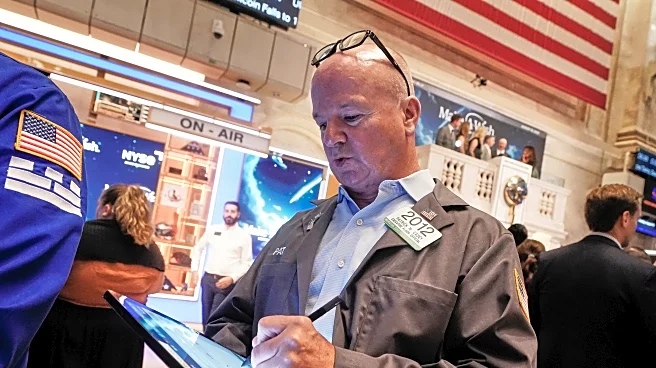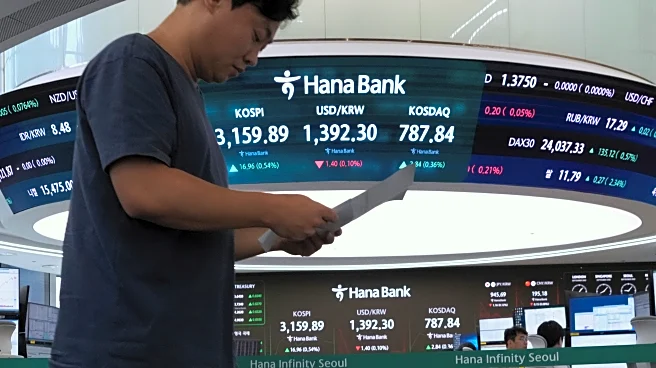What's Happening?
The price of gold has reached a new record high, surpassing $3,500 an ounce, as investors turn to safe-haven assets amidst inflationary pressures and geopolitical uncertainties. This surge in gold prices reflects a significant increase since early 2023, driven by a weakening US dollar and central banks increasing their gold reserves while reducing holdings in US treasuries. The rise in gold prices coincides with heightened long-term borrowing costs in the UK, France, and Germany, and a decline in stock markets across Europe and the US. The FTSE 100 index in the UK fell by 64 points, while France and Germany saw their 30-year government bond yields reach multi-year highs.
Why It's Important?
The record high in gold prices underscores the growing investor concern over global economic stability and geopolitical tensions. As central banks shift their reserves from US treasuries to gold, this trend highlights a potential loss of confidence in US debt securities. The implications for the US economy are significant, as a weakened dollar and potential interest rate cuts by the Federal Reserve could further impact financial markets. Additionally, the increased demand for gold suggests a broader shift in investment strategies, with investors seeking to mitigate risks associated with inflation and geopolitical instability.
What's Next?
The future trajectory of gold prices will likely depend on ongoing geopolitical developments and economic policies. Analysts predict that gold could continue to rise, potentially reaching $3,700 an ounce by next June, with further increases possible if geopolitical or economic conditions worsen. The Federal Reserve's upcoming meeting and potential interest rate decisions will be closely watched, as they could influence market dynamics and investor sentiment. Central banks' continued accumulation of gold reserves may also impact global financial markets, prompting further shifts in investment strategies.
Beyond the Headlines
The shift towards gold as a reserve asset reflects deeper concerns about the stability of traditional financial instruments and the global economic landscape. This trend may signal a long-term change in how countries manage their reserves, with implications for international trade and monetary policy. The growing preference for gold over US treasuries could challenge the dominance of the US dollar as the world's primary reserve currency, potentially leading to shifts in global economic power dynamics.













